Are you harvesting hordes of fresh fungi?
Making mushroom jerky is a great way to preserve the bounty and provide your family with tasty snacks at the same time.
Starting the jerky-making process can seem daunting if you’ve never done it before, but it isn’t difficult.
Read on to learn how to make delicious mushroom jerky at home, including smart storage techniques and a marinade recipe sure to make your mouth water.
Materials to Make Mushroom Jerky
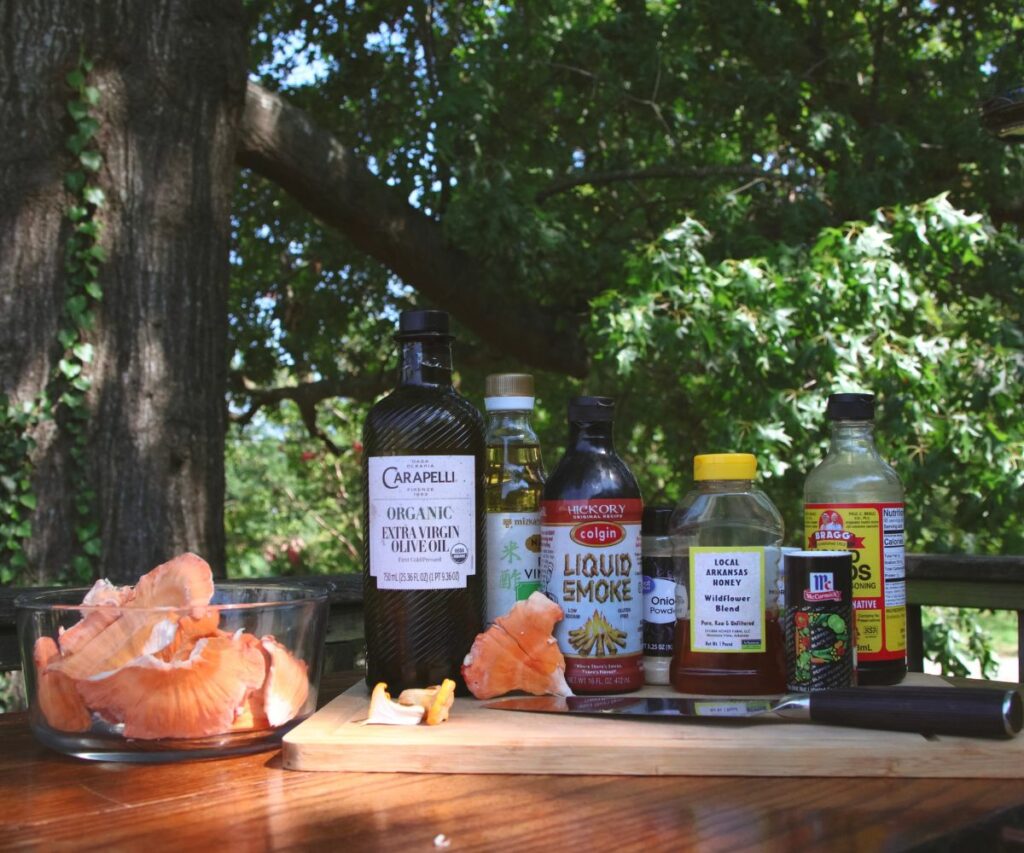
You’ll need the proper tools to transform fresh mushrooms into a succulent snack. Gather the following materials before you begin:
- Mushrooms: Shrooms are the stars of the show. You can buy them at the store or use edible ones you forage. I like larger varieties like maitake, but smaller chanterelles and baby porcinis are also delectable.
- Knife: Mushroom jerky should be trimmed and sliced thinly, so take your sharpest kitchen companion on this journey.
- Dehydrator: You can use whatever dehydrator you have, as long as it’s equipped with temperature controls. If you don’t have one, I recommend the trusty Nesco Snackmaster Encore. It’s affordable, reliable, and perfect for all my dehydrating needs.
- Storage containers: Mushroom jerky won’t last as long as pure dehydrated mushrooms. To maximize its shelf life, store it in airtight containers like mylar bags or mason jars.
- Marinade: You can use your favorite or go with mine. The sweet-and-sour whiskey marinade I’ve outlined below is a tangy masterpiece, delivering a smoky burn that will leave you craving more.
Sweet and Sour Whiskey Marinade
You don’t have to use this sweet-and-sour whiskey marinade recipe, but I highly recommend it. Inspired by the classic cocktail with a subtle twist of chipotle heat, these flavors frame the fungi without overpowering them.
The following recipe will work for one pound of fresh mushrooms. Here’s what you’ll need:
- 1 cup soy sauce or liquid aminos
- ½ cup sweet-and-sour cocktail mix
- ¼ cup whiskey
- 2 tbsp olive oil
- 4 tbsp honey
- 4 tbsp rice vinegar
- 3 tbsp mustard
- 3 tbsp garlic granules
- 1 tbsp liquid smoke
- 1 tbsp onion powder
- 1 tsp chipotle powder
Add all the ingredients to a large bowl and mix well, ensuring everything is blended. Store the marinade in the refrigerator until you’re ready to use it.
Substitutions
No cocktail mix on hand? Blend two tablespoons of water, two tablespoons of sugar, and four tablespoons of lemon or lime juice to craft an impromptu mix.
If you prefer to make an alcohol-free marinade, you can replace the whiskey with apple cider vinegar.
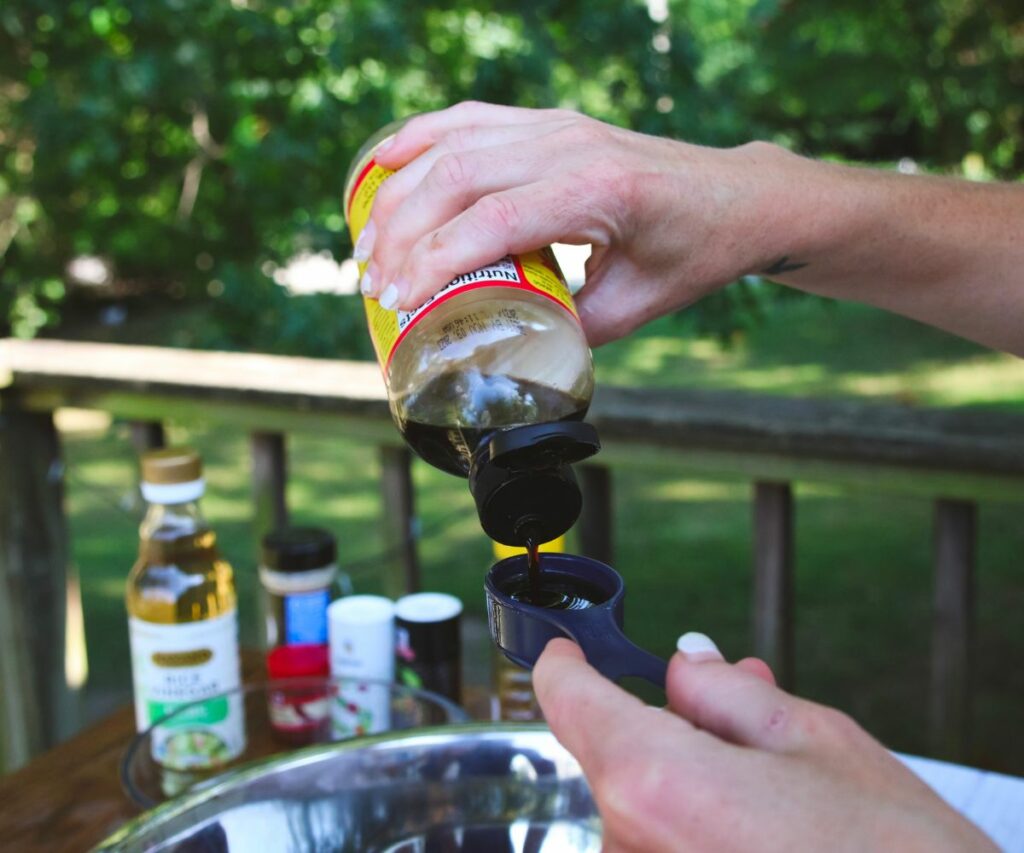
How to Make Mushroom Jerky
1. Source Mushrooms
When it comes to making jerky, not all shrooms are created equal. You want fungi with distinct flavors that will chorus with the marinade, creating a sticky umami love bomb inside your mouth. It’s also preferable to use larger varieties, which make bigger pieces and provide a heartier texture.
Here are my favorite foraged fungi for jerky-making:
- Chicken of the Woods
- King bolete
- Berkeley’s polypore
- Hen of the Woods (Maitake)
- Chanterelle
- King oyster
These species are recommendations, not rules. You’ll be at the mercy of the climate and season when foraging for jerky shrooms, and you won’t always be lucky enough to find massive flushes or giant polypore fungi. When it comes down to the nitty-gritty, you can use any mushrooms you like — as long as they’re edible!
If you’re not into foraging, you can buy cultivated mushrooms at the store. Go for big shiitake, portobello, or king oysters. If you can access a specialty market, pick up lion’s mane or maitake. You can even buy dried shrooms and rehydrate them.
Remember to check the mushrooms out carefully whether you’re foraging or buying. Don’t pick older or buggy mushrooms — starting with fresh fungi is the only way to ensure your final product is up to standard.
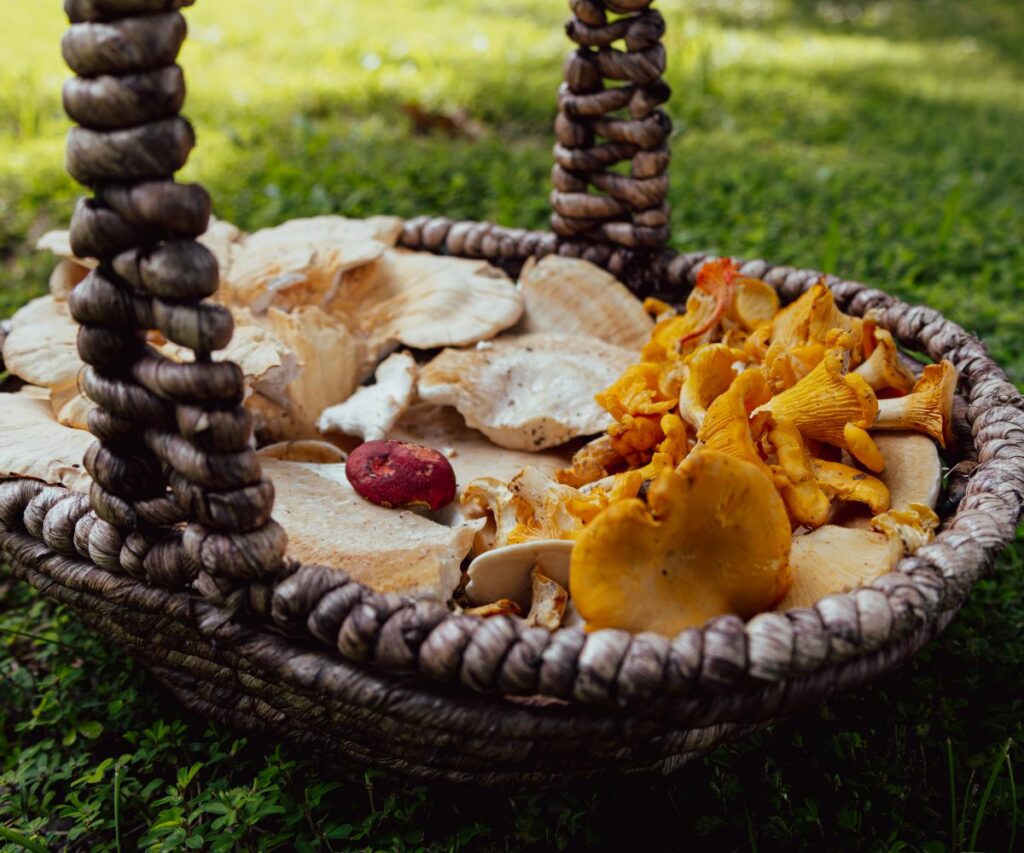
2. Clean and Slice the Fungi
When cleaning fungi, use a damp paper towel or dishcloth to wipe away debris from the cap, stem, and pore surface. Remove any insects, and look between the gills to check for bugs and grime in those hard-to-reach areas.
Once your fruits are clean, it’s time to slice them. Fungi have a fibrous structure that you can cut with or against the grain, just like beef or venison jerky. If you like a chewier texture, cutting with the grain is better. For a softer texture, cut against the fibers.
I like thin strips of mushroom jerky cut with the grain. I usually try to make slices about ¼” thick, but cutting soft, pliable fungi to uniform size is difficult, and pieces always vary in thickness. Those who prefer more variety can skip slicing altogether and simply tear the mushrooms into pieces.
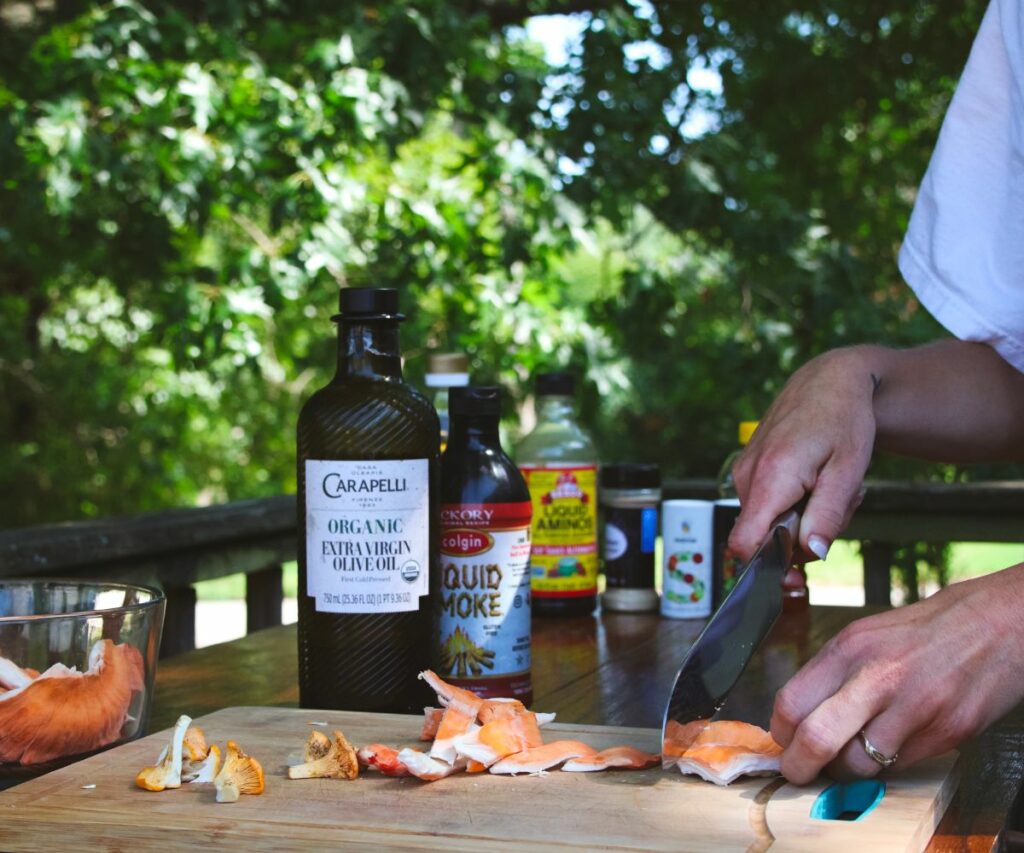
3. Marinate Mushrooms to Taste
Add your mushroom slices to the marinade and toss, ensuring each piece gets a nice coating. The marinade doesn’t have to cover the fungi completely, but there should be a substantial amount of liquid in the container.
Cover the container and leave it in the refrigerator overnight. Every few hours, stir the mushrooms with a spoon to spread the marinade.
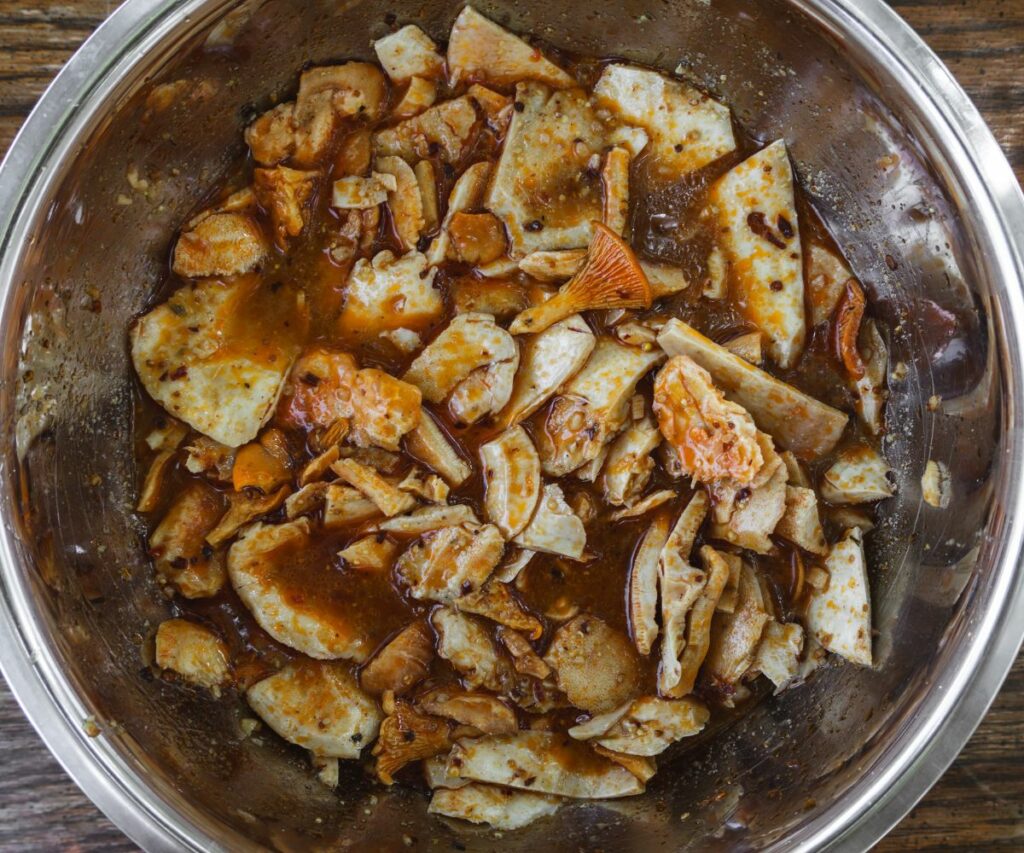
4. Arrange and Dehydrate
Once your mushrooms have marinated, you can start dehydrating them. While I’m a staunch advocate for draining the marinade when crafting wild game jerky, I find it takes something away from mushroom jerky. They need all the flavor they can get, so don’t pat your pieces dry.
Instead, hold them over a bowl and let the marinade drip off for a moment or two. Afterward, put them straight on the racks, arranging them a few centimeters apart. Turn your dehydrator to 125° F and leave the mushrooms to dehydrate for four hours.
You may need to adjust the timing based on the type of shrooms you used and how thick you sliced them, but four hours is a good starting point.
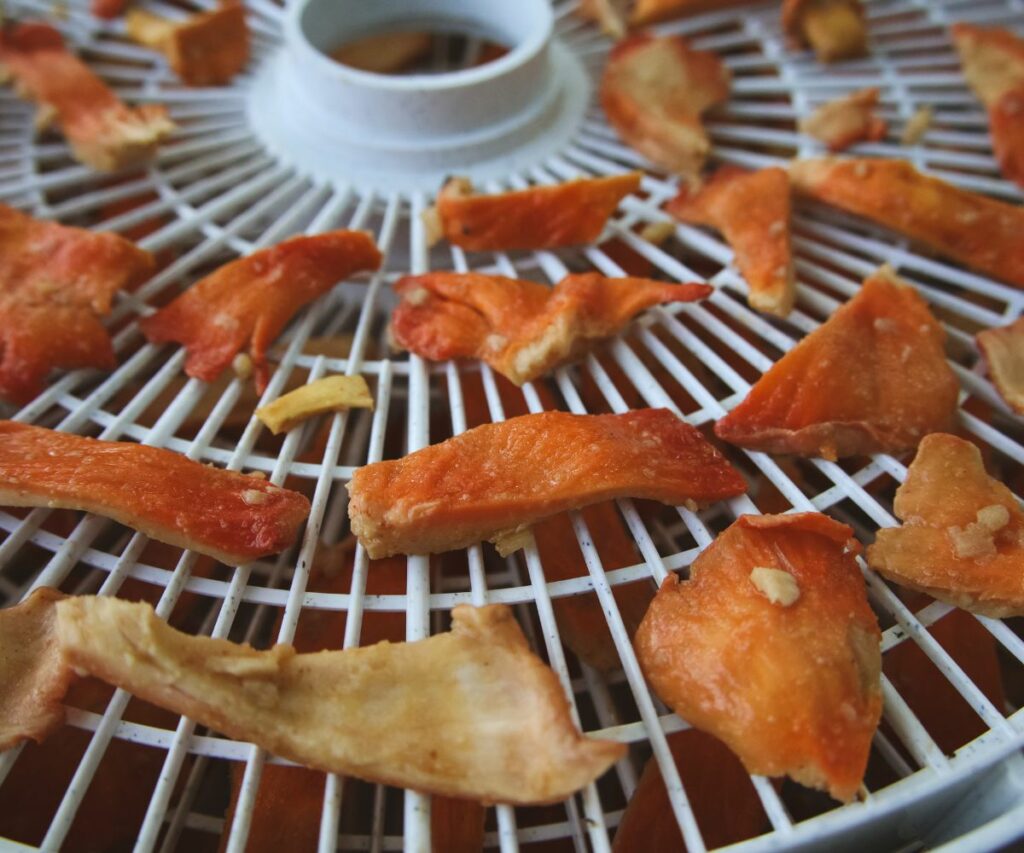
5. Check for Doneness
The perfect mushroom jerky will have a little bark on the outer edge and pull apart easily. If the pieces are still wet and squishy, they need more time. You can put them back in the dehydrator and recheck them every hour until you’re satisfied. If they’re brittle and break, they’re overdone. Unfortunately, this means your jerky is toast, but you can salvage the shrooms by adding them to soups or stews.
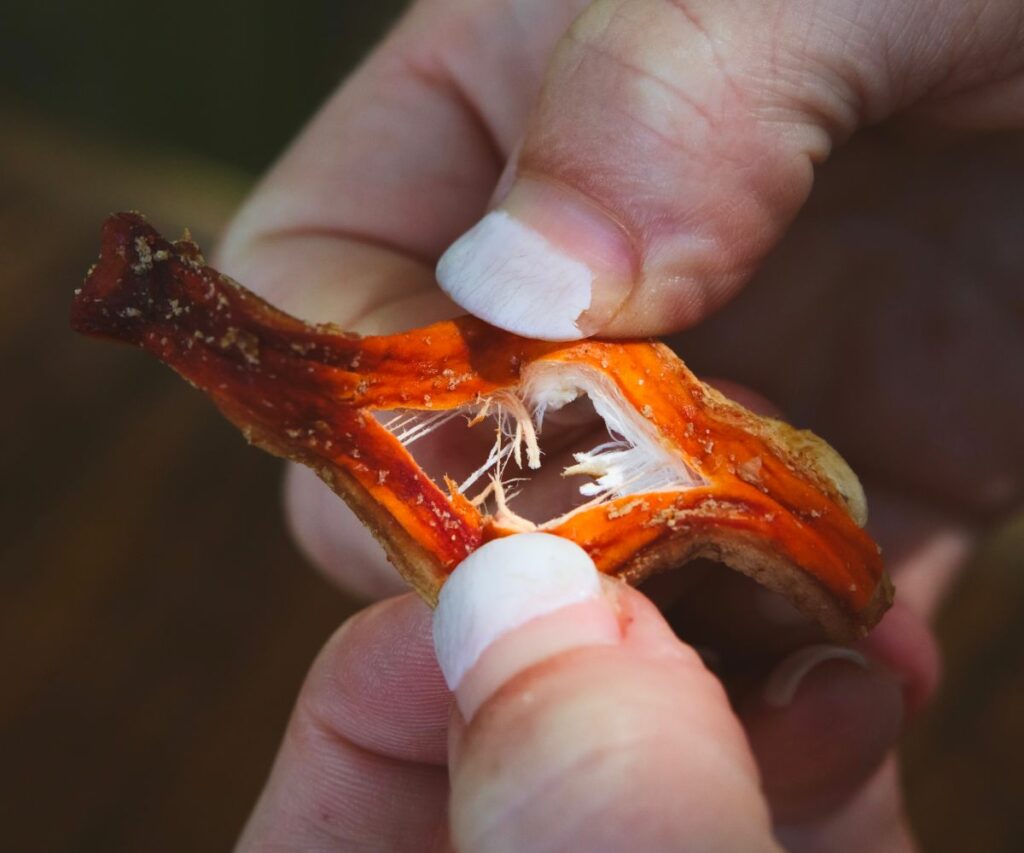
6. Leave Mushrooms to Set
Why let the fungi rest? Oil and extra liquid from the marinade make freshly dehydrated mushroom jerky appear wet and may affect the mouthfeel.
I find that leaving jerky to set for ten or fifteen minutes lets the excess liquid dissipate and allows the other flavors to get reabsorbed. The pieces tighten as they cool down, improving the taste and texture.
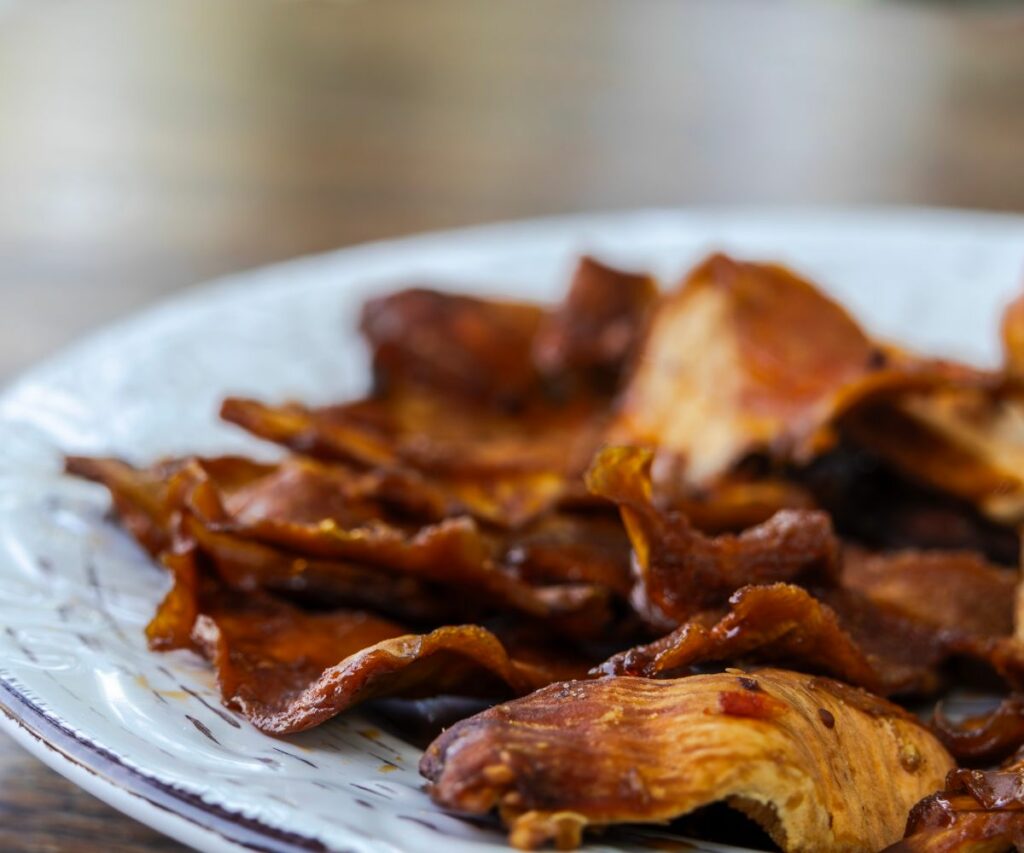
7. Store or Enjoy
In my house, mushroom jerky never lasts long enough to get stored properly. It usually disappears within a day or so, but there are options for those hoping to put away a stockpile between seasons.
Start with an airtight bag or container. Put your jerky inside and add oxygen absorbers, which will slow the oxidation rate and extend the jerky’s shelf-life. Then, place the container in a cool, dark place. Once it’s out of sight, try not to think about it — the temptation is hard to resist.
Alternatively, you could vacuum seal your jerky and freeze it. Freezing meat-based jerky works well, but mushrooms can be finicky depending on the species. They could break down when exposed to freezing temperatures, so proceed with caution.
It’s important to note that no matter what you do, mushroom jerky won’t last as long as plain dehydrated mushrooms. The added oil will make the jerky go rancid over time. Even if you follow the storage recommendations down to a t, your final product will still only stay good for six to eight months.
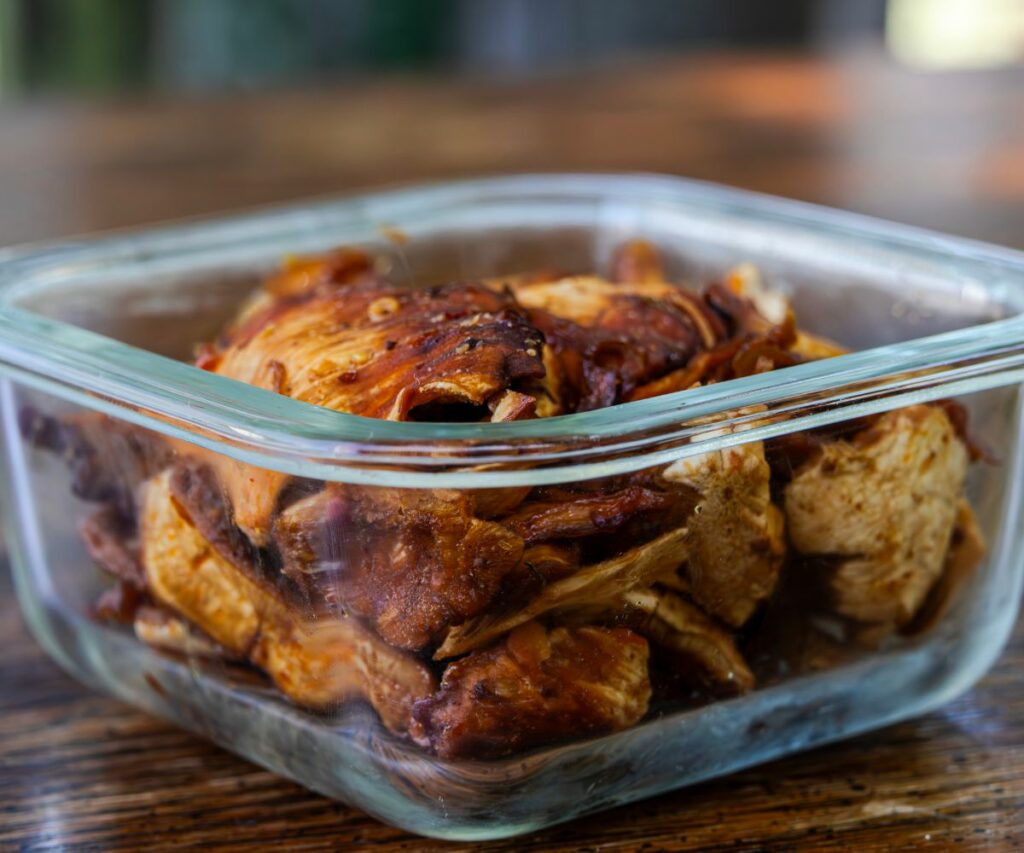
Ready to munch on mushrooms in a whole new way? Now that you know how to make mushroom jerky, the world is your oyster. Whether you’re foraging for shrooms in the forest or hitting up the local supermarket, you’re ready to put your harvest to good use.


Hey, thank you very much!
I`ve followed your recipe, had an abundance of chanterelles and that seamed like a great way to store them.
What a game changer!!!
They turned out really delicious, and most of the jerky is sadly gone by now.
Cant wait for next season to start experimenting with other mushrooms and different seasonings.
I’m so glad you liked it! Let us know what seasonings you tried.
brb. I have to go find some mushrooms now.
Oh my god, this looks like it would taste SO GOOD! I can see why you never put the lid on the container.